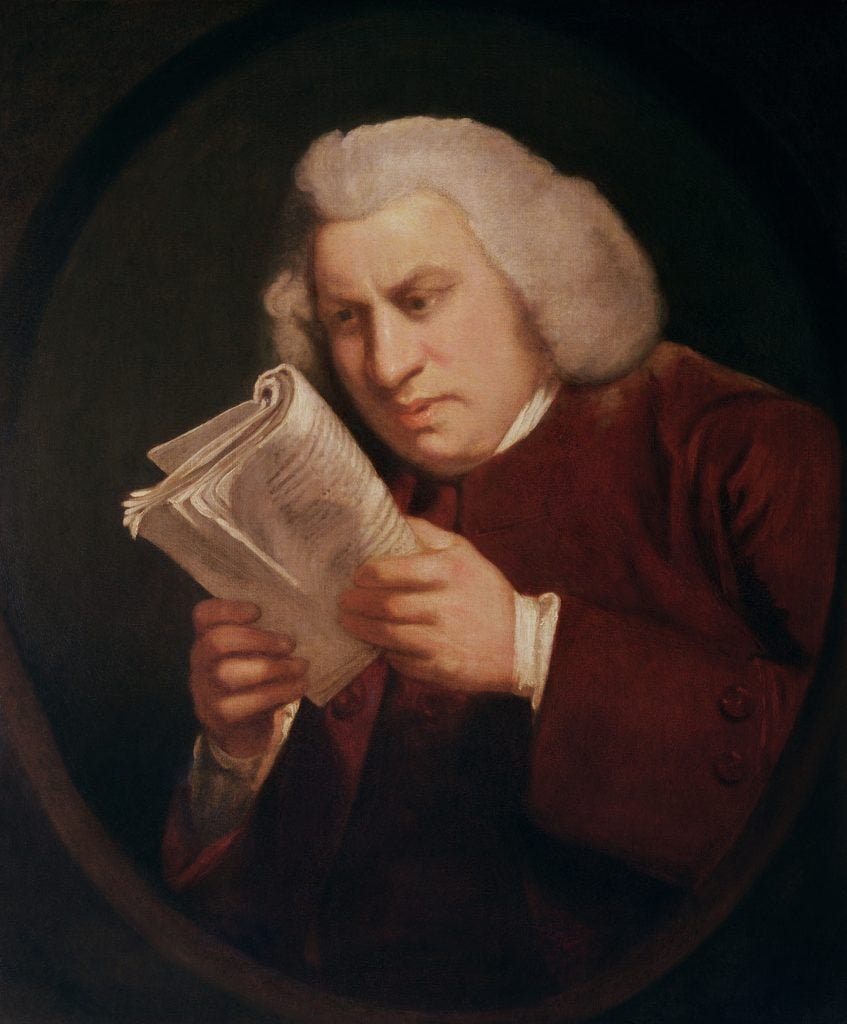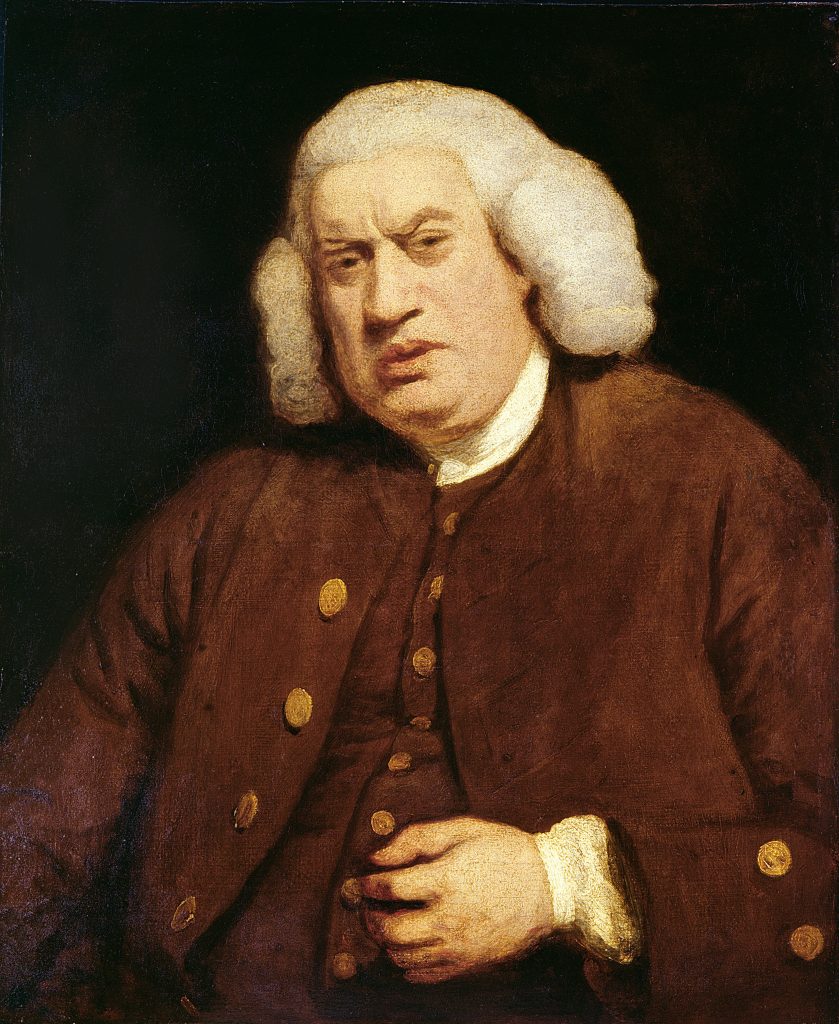Pop Culture
Art Behind the Meme: Two Comical Portraits of a Serious English Scholar
The man in the "What Am I Reading” meme, Samuel Johnson basically invented the dictionary.

The man in the "What Am I Reading” meme, Samuel Johnson basically invented the dictionary.

Tim Brinkhof

Back in late 18th-century London, Samuel Johnson was known for many things. He was an accomplished poet, playwright, and essayist. He was a literary critic and author of A Dictionary of the English Language, which, as its name suggests, was one of the first-ever English dictionaries. He was such a well-known figure that he spent the last years of his life being followed around by his own biographer.
Nowadays, however, Johnson is almost exclusively known as the large, wigged, confused-looking man of the “What Did I Just Read?” meme. It’s distributed online alongside images of an absurd, shocking, or surprising line of text, often taken from an obscure book or social media post. Or, it’s used to tell jokes like this:
Samuel Johnson meme. We've finally gained cultural relevancy. pic.twitter.com/PQDsBQ4WxM
— Kathleen Alves 🇵🇭 🧘🏽♀️ (@katalves18c) October 30, 2015
Originally, the meme format featured a crudely drawn image of McDonald’s mascot Ronald McDonald. Johnson didn’t appear on the internet until someone uploaded a picture of his portrait paintings in 2012, according to the website KnowYourMeme.com. His befuddled expression, seemingly unfitting for a formal portrait, quickly replaced the fast food clown as the meme’s new, default face.
The two portraits featured in the “What Did I Just Read?” meme were both painted by Joshua Reynolds, who, at the height of his career, was known as one of Britain’s premier portrait painters. One, from 1775, shows Dr. Johnson reading from a book, the pages held close to his face because, according to the aforementioned biographer, James Boswell, the near-sighted subject did not want to be depicted as a “Blinking Sam.”
The second painting from 1772, a 24-by-75 inch canvas commissioned for Henry Thrale’s Streatham Park gallery and currently shared between the Tate and the National Gallery, shows Johnson looking up, seemingly from the same book, giving a look that, as is the case with many iconic images, has to be seen rather than described.

Joshua Reynolds, Portrait of Dr. Samuel Johnson (1772). Photo: Art Images via Getty Images.
No one knows the story behind this look. It’s possible Reynolds messed up, as portrait painters sometimes do, unable to realize his original intention. It’s also possible Dr. Johnson approved of the look, that he had posed this way because it would one day prove comical to some. Although his scholarship was deadly serious—and one can hardly imagine a more boring job than writing a dictionary—Johnson actually was known as a humorous guy.
my professor talked about samuel johnson in his lecture and i couldn't stop thinking about this meme pic.twitter.com/HO3C8a5wKE
— happy ⑂ 🦇 (@eternallymissed) November 26, 2020
Boswell, the biographer, decided to follow Johnson around primarily because the latter made him laugh. Over the years, he recorded many comical remarks, some taken from conversations and others from Johnson’s writing. “It is commonly observed, that when two Englishmen meet, their first talk is of the weather; they are in haste to tell each other, what each must already know, that it is hot or cold, bright or cloudy, windy or calm,” Johnson wrote for The Idler.
He even worked his jokes inside his dictionary, as evidenced by definitions like: “To worm: To deprive a dog of something, nobody knows what, under his tongue, which is said to prevent him, nobody knows why, from running mad.”
And this one, which hints at his capacity for self-mockery: “Lexicographer: A writer of dictionaries; a harmless drudge that busies himself in tracing the original, and detailing the signification of words.”
What’s in a meme? Sometimes, art. Art Behind the Meme brings you the low-down on the artworks that have achieved our era’s finest and rarest feat: virality. Read on for how these art-historical works have been reimagined for the age of social media.